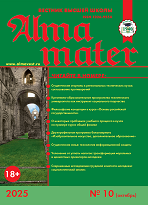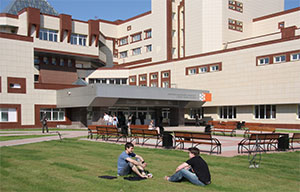UDC 378:303
https://doi.org/10.20339/AM.03-20.007
N.S. Danakin is Dr.Sci. (Sociology), рrof. at Belgorod State Technological University n.a. V.G. Shukhov e-mail: synergy7@mail.ru; and V.V. Shkilev is Cand.Sci. (Sociology), doc. at Belgorod National Research University e-mail: vitaliy9092@mail.ru
Analyzed is the theme of broad use of rating technologies in university educational system. Actualized are issues of effectiveness of these technologies. The article presents results of a sociological study of these issues. Five criteria of effectiveness were specified, i.e. cognitive, emotional, socio-psychological, motivational, and conative (behavioral). According to results of the year, about two-thirds of surveyed students and teachers know their rating. Perceptions of ratings are usually accompanied by positive or moderate emotional reactions. A third of surveyed teachers noted positive development in changing relationships in the team, and the vast majority of students believes that relationship in study group has not changed due to use of grade rating system. Negative assessments of motivational effect of grade rating system outweigh positive assessments of both teachers and students. At the same time, three quarters of surveyed students said, that they have desire to change something in their studies, based on results of rating assessment.
Key words: grade rating system, rating-technology, rating evaluation, university education, efficiency, criterion, indicator.
References
1. Espeland, W.N., Sauder, M. Rankings and reactivity: How public measures recreate social worlds. American Journal of Sociology. 2007. No. 1. P. 1–40.
2. Hazelkorn, E. Learning to live with league tables and ranking: The experience of institutional leaders. Higher Education Policy. 2008. Vol. 21. P. 194.
3. Salmi, J., Saroyan, A. League tables as policy instruments: The political economy of accountability in tertiary education. In: Higher Education in the World 2007. Hampshire: Plagrave, 2007. P. 79–90.
4. Bokova, T.N., Krivoshapova, A.S. Rating system for assessing students' knowledge in higher educational institutions of the USA and Russia. Psychology and Pedagogy: methodology and problems of practical application. 2012. No. 25-2. P. 223–226.
5. Glukhova, T.V. The point-rating system for monitoring and evaluating students’ knowledge: implementation problems and development prospects. The world of science, culture and education. 2015. No. 1. P. 18.
6. Grigoriev, A.N. Rating system for assessing training students. Higher Education Today. 2013. No. 5. P. 15–23.
7. Ponomarev, M.V. 10 myths about the point-rating system. URL: http://mpgu.su/obrazovanie/ballno-reytingovaya-sistema/10-mifov/
8. Prakhova, M.Yu., Svetlakova, S.V., Zaichenko, N.V., Khoroshavina, E.A., Krasnov, A.N. The concept of a point-rating system for assessing student learning outcomes. Higher education in Russia. 2016. No. 3. P. 17–25.
9. Sadchenkova, Yu.P., Belskaya, E.G. The use of rating systems for monitoring the knowledge of university students: problems and prospects. University Herald (State University of Management). 2013. No. 18. P. 192–194.
10. Shekhonin, A.A., Tarlykov, V.A. Score-rating system for assessing learning outcomes. Higher Education in Russia. 2011. No. 6. P. 22–30.











.png)






